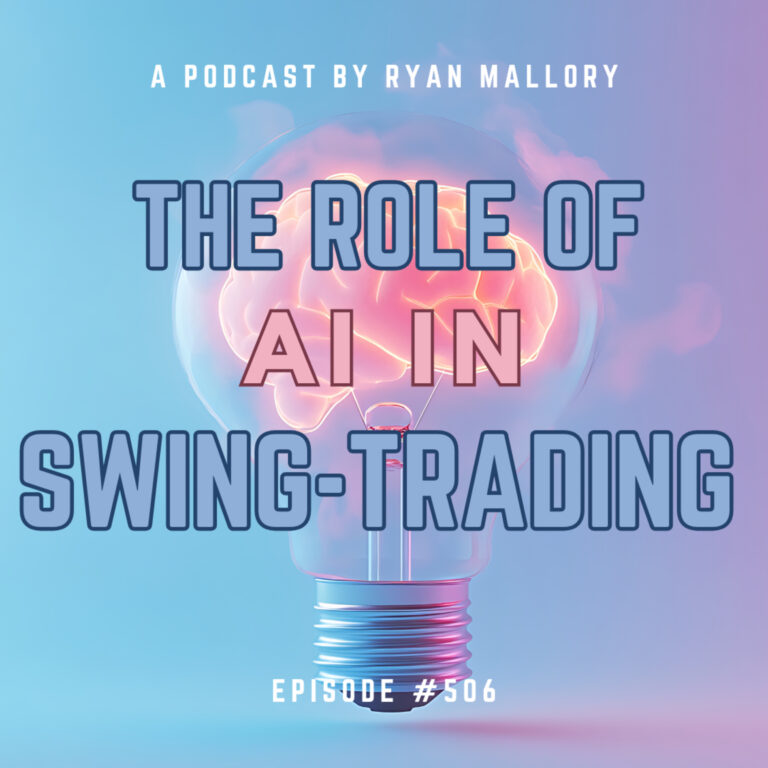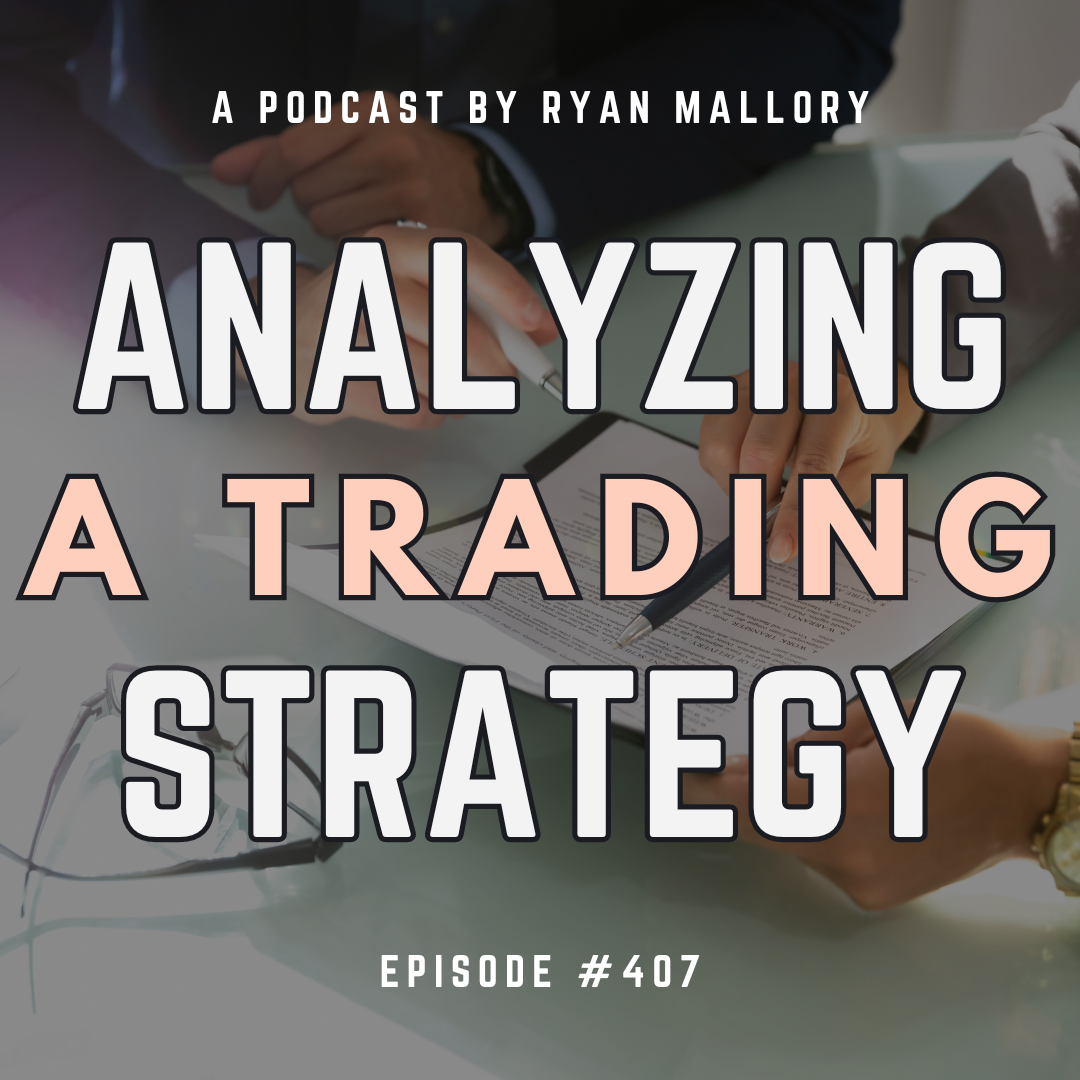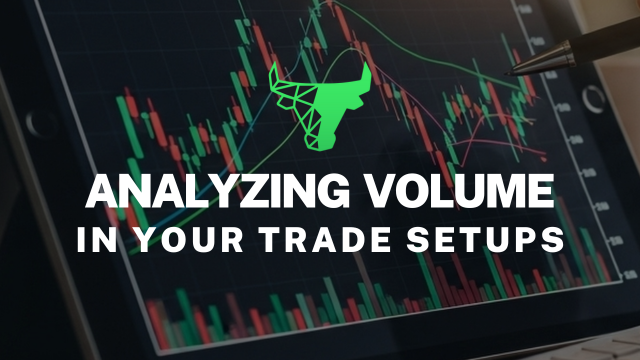Episode Overview
Ryan goes over one listener’s swing trading journey, analyzes the trading strategy being employed, and answers questions on everything from short squeezes and short floats to insider and institutional buying and sector rotations.
Available on: Apple Podcasts | Spotify | Amazon | YouTube
Episode Highlights & Timestamps
- [0:07] Introduction
Ryan kicks off the episode by explaining why he gives listeners redneck-style aliases and introduces Jasper, a UK-based listener trying to improve her swing trading approach. - [1:56] Jasper’s Trading Journey
Jasper explains her motivation, trading goals, and a recent 25% loss from poor risk management and overconfidence in a single stock. - [3:33] Improving the Plan
She outlines improvements to her approach, including trade journaling, hard stop losses, alerts, and portfolio separation between dividend and swing trades. - [6:52] Segmenting Accounts for Mental Clarity
Ryan explains why keeping dividend, long-term, and swing trades in separate accounts helps reduce emotional interference and leads to better decision-making. - [12:28] Answering Jasper’s Questions
Ryan tackles her nuanced questions on short float, insider activity, sector strength, and aligning swing trades with broader market cycles.
Key Takeaways from This Episode:
- Separate Trading Objectives: Keep dividend, long-term, and swing trades in different accounts to reduce emotional overlap.
- Don’t Double Down: Doubling or tripling down on a losing position isn’t scaling, it’s emotional decision-making.
- Set Clear Exit Plans: Define both your stop-loss and profit-taking levels before entering any trade to stay disciplined and avoid emotional decisions.
- Sector and Market Alignment Matter: Even great setups can fail if the sector or market isn’t supportive.
- Insider Activity Isn’t a Shortcut: Insider buying/selling is too slow and uncertain to drive timely swing trading decisions.
Resources & Links Mentioned:
- Swing Trading the Stock Market – Daily market analysis, trade setups, and insights by Ryan Mallory.
- Join the SharePlanner Trading Block – Get real-time trade alerts and community support.

Take the Next Step:
✅ Stay Connected: Subscribe to Ryan’s newsletter to get free access to Ryan’s Swing Trading Resource Library, along with receiving actionable swing trading strategies and risk management tips delivered straight to your inbox.
📈 Level Up Your Trading: Ready for structured training? Enroll in Ryan’s Swing Trading Mastery Course, The Self-Made Trader, and get the complete trading course, from the foundational elements of trading to advanced setups and profitable strategies.
📲 Join the Trading Community: Sign up for SharePlanner’s Trading Block to become part of Ryan’s swing-trading community, which includes all of Ryan’s real-time swing trades and live market analysis.
Full Episode Transcript
Click here to read the full transcript
0:07
Hey, I’m Ryan Mallory and this is my Swing Trading the Stock Market podcast. I’m here to teach you how to trade in a complex, ever changing world of finance.
0:16
Learn what it means to trade profitably and consistently, managing risk, avoiding the pitfalls of trading, and most importantly, to let those winners run wild.
0:25
You can succeed at the stock market, and I’m ready to show you how. Hey everybody, this is Ryan Mallory with Swing Trading the Stock Market, and today’s e-mail comes
0:36
from a person we’re going to call her Jasper. Now I give people the the fake names because most people don’t want their names always out there on
0:47
the Internet forever. And that also allows them to be able to e-mail me and OfferUp their stories and their backgrounds
0:53
without people actually knowing who they are. So I actually had a person leave a comment on one of the podcast saying, oh, that’s kind of
0:59
offensive to be using the term redneck. I’m not being offensive.
1:03
I mean, I’m from Florida. I was, I was born and raised in Florida and not like in Miami or Fort Lauderdale or the like, the
1:10
Ritzy kind of places I’m talking about where it was nice, I had a good upbringing, but it wasn’t. There was definitely a lot of Florida rednecks and stuff growing up, so and and and and probably to
1:20
some degree. I’m a Florida redneck myself.
1:22
But in any case, so there’s no offense. I’m not apologizing for that at all.
1:27
So any case, Jasper writes, Hi Ryan, I work full time in education here in the UKI get a home around 3:30 PM each day.
1:37
So I miss the volatility of the first hour of trading U.S. stocks, which isn’t necessarily a bad thing.
1:42
No it’s not. I also have a hobby business that generates a semi passive income.
1:48
I have no credit card or other debts, only my mortgage. After my Christmas holiday, reading and learning and doing self development books, I opened an ISA
1:56
account. I also opened a fixed income bond account as well as investing in the stock market.
2:01
I didn’t go blindly into the stock market. I read more books and researched intensely how to create a dividend income portfolio.
2:08
All of my dividend stocks are in the UK market, so I don’t see intraday movements while I’m at work that could end up making me panic.
2:13
So when seeking further information I stumbled across your podcast which I have listened to non-stop since January of 2024.
2:21
This week I have been on school holidays and thought it was pertinent to assess my recent mistake of increasing my position size in a stock that I ended up losing out on with about a 25% loss.
2:34
I’ve been binge listening to your podcast to help me analyze where I went wrong. Firstly, I thought I was scaling into a position when on reflection I was doubling and tripling and
2:44
quadrupling down on the stock. Secondly, I did not set a hard stop loss and was over trading effectively chasing gains.
2:52
Thirdly, I had my dividend growth in swing trades all in one portfolio. Finally, I relied on other people’s due diligence in StockTwits posts relating to the stock that I
3:02
was invested in and oblivious to the impact of news. Bad news made it rising, good news made it bottom out.
3:08
I still don’t get it. As well as trying to be the first end with the next NVIDIA or SMCI, I can now identify that my
3:15
position was far too big, the risk to the reward ratio was ridiculous and I was not in a swing trader mode.
3:22
After absorbing much of your great knowledge over the past week and re listening to ones I felt were relevant to help me unpack my mess I have made many adjustments to my trading plan.
3:33
I have meticulously recorded and journaled each trade date, entry price, reason for trade, technical indicators, key information and price targets using zones of support and resistance and estimated
3:46
trade length. I have set price alerts for stocks with charts that interest me so that when they reach the price I
3:53
expect them to get in their current pattern to recheck the charts for a possible trade and entry. Most importantly, I have set hard stop losses at 5% on all trades.
4:03
I do not trade with leverage, I just play long on the swing trades. I have also moved my dividend and growth stocks to separate portfolios.
4:12
So as my mindset is correct for swing trading, I have also found a scanner that I am confident in using.
4:17
With Fenvis. I can look over the charts with the technical indicators that I like, for example double bottom
4:23
patterns. My questions are and she’s actually giving me a lot of material already but she has still questions.
4:37
My questions are, does a high short float above 20% indicate future liquidity? When a stock is trending lower, Where is it best to stay away from these trades? Are there other factors that I should consider before placing a trade?
4:45
I know not to trade through earnings, although I cannot predict a news release. What about insiders buying up large quantities of shares?
4:52
Likewise insiders selling large volume of shares? What about a stock that has a high percentage of insider and institutional ownership?
5:00
Are these better setups when the technical patterns are good? Would an oversold stock with good technical indicators in a struggling sector be considered a good trade?
5:09
How do you find information about sectors, industries and cycles?
5:14
I am still learning and trying to find my rhythm with swing trading. Dividend stocks are now on a set and forget, as are growth stocks.
5:21
I have learned since January that patience is key. I clearly don’t have as much of it as I thought I did.
5:27
I write everything down or I realize I’ll forget why I got into the trade and when I got out. Bo MO does exist and I have to be mindful of people on StockTwits and Wall Street bets pumping that
5:39
angle. It is a process and practice makes progress.
5:45
Thank you for your podcast, they are very informative and timeless. I can listen to snippets about them that I haven’t quite grasped and your explanations are clear and
5:53
concise. Thank you again for taking the time to read my e-mail.
5:57
Sincerely, Jasper. OK, I sometimes will say there’s a lot to unpack on a particular podcast, but in this case there
6:05
really is a ton to unpack and I think I can get it all in. We’ll see.
6:10
Maybe this turns into a second podcast, I’m not sure, but I think I think I can do it. OK, so a few things.
6:16
This is Auk trader doesn’t have to pay attention to the first hour of trading in the US because they’re working a job.
6:21
That’s not the worst thing in the world. Now there’s times where you could be long on a stock and the market’s gapping way lower because of
6:27
like a bad CPI report and you might be sitting on some heavy losses and then the market continues to trend down lower after that.
6:33
I mean there’s stop losses that you can put into place as well to help manage that, this particular person has managed to segment their dividend and their long term portfolios into different accounts.
6:52
Now one of the reasons why I do that is because swing trading can elicit a lot of emotion because you’re trying to get gains in a in a much more compact time frame.
7:00
Long term trades, they tend to be things that you’re going to hold for many, many, many years.
7:06
And so in my opinion, it’s always been best to have them in different accounts.
7:16
And likewise you don’t want the lack of urgency that comes with your dividend investments or with your long term investing to interfere with your swing trading.
7:24
For instance, I don’t look at my dividend account everyday.
7:30
So I’ll often times look at the charts, but I’m not getting all worked up about the movements in them because I know what the objective is for that account and that’s to collect dividends.
7:40
Same thing with the long term. My long term trades are in order to accrue much larger gains over the course of many, many years to
7:49
come. But my swing trades, those are things that I’m managing on a daily, even minute by minute basis.
7:55
I’m watching them all throughout the day, 6 1/2 hours a day.
8:03
It’s a much more active experience. But I don’t want the emotions of like for instance, let’s say this, let’s say I’m having a bad day
8:12
in the market from a swing trading standpoint and I also have a bad day in the dividend account and I’m looking at the entire account as a whole and I’m thinking, man, I’m way down on the day from a
8:23
dollar standpoint. And I also say don’t watch the dollars, watch you know how you’re managing the trade.
8:28
But still if if you’re doing that, the emotions are gonna be way higher than if you’re just looking at the swing trading account.
8:34
So I just always feel that keeping the accounts separate is a is a much better approach to trading. Now one of the things that the person realized that they were doing, and this isn’t part of the
8:44
questions, but they said that they were scaling into positions but not realizing what they were really doing was doubling, tripling and quadrupling down.
8:51
That is something that you definitely don’t want to do it. People who have been long term listeners of the podcast know that I’m like hugely against that
8:59
because all you’re doing is doubling, tripling and quadrupling the emotions. Now if you were to look at my long term trades, yeah, I am adding over time, but I also know the Max
9:08
amount that I want to do. I’m not at starting off with a full position and then doubling my full position to twice as much as
9:13
what I intended to get into. Doubling, tripling and quadrupling down is is a result of failure to admit that you’re losing on the
9:20
trade is not working the way it should and it’s a result of being undisciplined and unemotional with your trade.
9:27
But if you’re building a long term position, let’s say you have $100,000 account and you’re gonna add a few $100 to this one position over the course of the next year and you’re looking to put, you
9:39
know, up to $10,000 on that trade, OK, that’s totally different. That’s not doubling or tripling down, That’s just building a position over time and I do that with
9:48
my long term positions. I do that with my dividend positions as well.
9:52
One of the areas that she got messed up on was relying on other people’s due diligence and StockTwits posts.
9:58
Now one of the things about StockTwits, I love StockTwits. I have a good relationship with the people with StockTwits.
10:02
But whether it’s StockTwits or Twitter, there’s a lot of people on there that are posting things that are very much agenda driven.
10:09
Sometimes I might find myself like why is this stock going down today? And I’ll go on StockTwits just to see.
10:13
And then I’m starting to, it’s almost turning into a echo chamber. You start realizing that you’re just looking for reasons for why it shouldn’t be going down and and
10:21
why it might be going back up in the future. That’s often times what we’ll be looking at the analysis for on these message boards.
10:28
And so we’re really looking for confirmation bias when we go on these. There’s very few people that will actually post charts and information that in a in a unbiased way.
10:39
Most people will be pumping their books. Now often times on Twitter and StockTwits I’ll post charts that I have no position in and I really
10:47
don’t care if it goes up or down. I’m just showing you what the charts show.
10:50
So and not trying to toot my own horn here, but I really don’t have too much of A agenda. The agenda that I would say that I have is that I’m trying to bring more exposure to what I do.
11:02
So I’m trying to provide good information to bring more exposure to my work because I am pretty proud of what I do at SharePlanner.
11:10
So in doing that, I’m trying to provide information that I think will be beneficial to the public. But what a lot of people are doing, they’re going on these message boards and they’re trying to pump
11:20
their own positions. Either they have a huge losing position, they want to drum up excitement for it and tell everybody
11:25
why they should be long on it. Or you take something just like CNBC or Bloomberg and they bring these experts in or quote UN quote
11:32
experts, they’re they’re bringing them in from, you know, hedge funds, banks, different firms. And they’re talking really great about stocks.
11:42
Like Oh yeah, they had just somebody today talking on CNBC about the stock. It sounds like a really good buy.
11:46
I should go buy something. Why are they doing that?
11:47
Because they own the stock. They want you to buy it.
11:49
They’re probably down on it even. And they’re trying to get you to buy it.
11:53
They’re trying to get public support to drive that stock higher. And a lot of times it does work.
11:57
You’ll see somebody come in there and they’re, they’re pumping up a stock and the stock price starts surging because there’s enough of an audience to take notice of it.
12:05
And so you can’t trust people on CNBC or on Bloomberg and all these ones. Why?
12:11
It’s because they have health interests. They’re trying to push their portfolio, So many of them are.
12:17
And so the best thing you can do is not listen to those networks. They’re not good for swing trading.
12:23
OK. So I think I’ve got a lot of the early parts of this podcast out of the way.
12:28
Now to our questions. Does a high percentage of the short flow above 20% indicate future liquidity when a stock is
12:34
trending lower or is it best to stay away from these traits? So especially with the Wall Street bets crowd, there’s a lot of people that get caught up on a high
12:42
percentage of the stock being shorted. Like 20% is a lot.
12:45
That means there’s a heavy bet oftentimes by the street that the stock is going to go down. So if you do buy it and what people are hoping for, especially within the retail crowd, is that
12:55
they’re going to buy it and all of a sudden there’s going to be this massive short squeeze from the 20% that are having to cover was just creating a big run to the upside.
13:04
But what they’re not considering is the fact that there’s a lot of people that have huge positions, much more than us retail traders that probably have a lot more knowledge about the stock as well,
13:15
expecting it to go down. And so if you’re buying into a stock that has a high short flow because you think there’s going to
13:21
be a short squeeze, also know too, that you’re going against some pretty powerful forces there that believe the stock is going to be going in the exact opposite direction.
13:28
I mean, you look at the stocks like GME and AMC, they’ve been heavily shorted, right? I mean, yeah, I know they had their moment in the sun.
13:35
And I can be willing to bet that The Street has done a lot to avoid ever letting a GME or a AMC ruin them in the future.
13:46
But they’re still shorting those stocks. And what has the stocks done?
13:49
They’ve gone lower. They’re nowhere near where they were at back in the day.
13:54
Also, make sure you’re checking out swingtradingthestockmarket.com with swingtradingthestockmarket.com.
13:59
You’re gonna get all of my stock market research that’s going to include daily watch lists of stocks that I’m looking to buy or short.
14:05
Plus I do a watch list review on the watch list each day. Plus you’re gonna get multiple big tech updates throughout the week, multiple stock market updates
14:14
throughout the week. These are all video based so it’s really good and I’m going to be sending you my list of bullish and
14:21
bearish stocks for the week ahead. So really cool feature.
14:24
You’re supporting the podcast in the process really cheap. Check it out swing trading the-stockmarket.com or you can also go to shareplanner.com as well.
14:31
The other questions that Jasper has here, are there other factors that I should consider before placing a trade?
14:37
I know not to trade through earnings, I can’t predict news releases, but what about insider buying up large quantities of shares or insiders selling large amounts of shares?
14:47
So about that, there’s a lot of books that that have been written about trading and investing. They’re like, they’ll always tell you, like, Oh yeah, look at what insiders are buying the stock.
14:56
That’s always a great key because if they’re putting their money and their faith in the stock, they must believe that it’s going up.
15:00
And who knows better than the CEO of a company or a director or a vice president. Fair argument.
15:05
But I also think, too, that it’s such a saturated area of the market of people watching that stuff that there could be some value to it.
15:16
But there’s a good chance that the stock has already moved as a result of that. I know one of the more popular things to do now is to watch the politicians and what are they
15:24
trading. One of the more famous ones is Nancy Pelosi and her recent purchase of NVIDIA.
15:29
She made a killing off of it. But those disclosures are made and and it can be like months earlier that she made those trades.
15:36
Or Tommy Tuberville, the Alabama senator. He’s shorting the market.
15:39
He’s going long on the market. He’s doing all sorts of things, but often times his disclosure is coming way after the fact.
15:45
So you have to be aware of that. I also think too from a swing trading standpoint, trying to line up when a stock’s going to act
15:53
favorably to the fact that a CEO bought some of the shares or that the news that the CEO might be buying because of it or the outlook that the CEO has may not be lining up with your swing trading
16:02
time frame because swing trading is something that will last from a few days to a couple months, right.
16:07
But fundamental analysis can sometimes take years to play out. That’s why I have a long term account, because I also know that some of these stocks that I have
16:15
faith in for the long term that I think will be good long term investments may not be playing out in a swing trading like manner.
16:21
And often times my biggest winners are the most unexpected winners. So for instance, a lot of people try to find like what Jasper was talking about, trying to find the
16:30
next NVIDIA or SMCI and they’ll lose a lot of money doing it. But the next NVIDIA and the next SMCI usually comes as a result of not expecting that kind of a
16:39
move. Some of my best trades are were trades that were made not expecting them to go up high like that.
16:44
I mean some of them were came from a dividend account, some of them came from a swing trading account, some of them came from long term accounts.
16:49
I bought AMD back in October at an average price of ’cause I was scaling into it over time, not last October, it would have been October 2022 when the market was falling apart.
16:59
I started building a long term position in AMD. I think the average price was $59.
17:04
Earlier this year, it hit 210I closed out a good chunk of it, but I wasn’t necessarily expecting that to happen.
17:11
I mean, technically you could say that was like NVIDIA, not to the same degree, but it was a big jump in price that I wasn’t necessarily expecting within a year and a half.
17:21
Those kinds of moves typically take place when you’re not expecting them to happen and you react accordingly by protecting the profits in them.
17:28
Also, the other questions about should I be worried when insiders are selling large volumes of shares, insiders are selling shares all the time.
17:36
And and a lot of it, it’s not because they’ve lost faith in the company that they’re working for. It’s because they want to buy their yacht or they want to send their kids to their, you know, pretty
17:44
Ivy League school, college. So they got to cash out some shares because a lot of these people are very rich on paper but very
17:50
cash poor because it’s tied up in company stock. So they have to cash out a lot of it.
17:54
What about stocks that have a high percentage of insider and institutional ownership? Do these provide better setups?
18:00
I mean, I don’t necessarily think from a swing training standpoint it’s going to make that big of a difference because we’re really trying to play technical breakouts or pull backs to support levels
18:08
that are resulting in a bounce or maybe even a continuation play momentum kind of plays if it has higher insider ownership or institutional ownership.
18:19
I’ve never seen where that’s made a difference in trading because sometimes I’ll play trades that have absolutely putrid fundamentals.
18:28
But it has an incredible trade set up and I’ve done well with some of those. Now if everything’s equal on the surface and I’m talking about a two companies that have the same
18:36
trade setups but one has better ownership versus the other. OK, maybe then I would give that to tiebreaker.
18:40
But when are you gonna find 2 trades that are the exact same? And one of the other questions was, would an oversold stock with good technical indicators in a
18:49
struggling sector be considered a good trade? Well, as you know, I most of you guys know I use a top down trading strategy.
18:55
I want everything to be in alignment with each other. So an oversold stock, Yeah, that can be a good trade setup, but it needs to be in a good sector.
19:03
I don’t want to be getting into a oversold bounce play and the sector’s just completely falling apart because that’ll probably take the stock trade down along with it.
19:14
So no matter how good the trade set up is, I don’t really want to be in a bad sector. Often times I come across really good plays in some of the utility sector, but I don’t necessarily
19:23
want to swing trade those because utilities may not be the best place to be when the market’s starting to rally.
19:31
Because utilities are typically a place or a safe haven for a lot of investors. But when the market’s strong, they’ll rotate out of utilities and go into tech or discretionary.
19:45
And finally, how do you find information on sector cycles? A lot of it just comes down to analyzing the ETFs.
19:52
The ETFs, I stick with the XL ETS, that’s like XL BXLC. So Materials, Communications and you’ve got Energy, XLE Financials, XLF Industrials, XLI Tech would
20:05
be XLK, Staples, XLP, Real Estate is XLE Utilities, XLU Discretionary, XLY Healthcare, XLV and I probably have forgotten 1:00, but you get the point, you can look up all those suckers.
20:21
And you can figure out there’s 11 sectors in total. And finally, and I’ll wrap it up here in a second, but going back to the other question too, that
20:27
she was talking about, about wanting everything to be in alignment with each other. So this past week I put a couple of trade setups out there that I thought was worth watching.
20:35
And I always tell everybody I I do want my market to be in alignment with the trades that I take. It’s always the case.
20:42
So good trade setups I’ll pass up on if I don’t feel like all those things are in alignment with each other.
20:47
And a good example of that was DK and G and AB and B this past week. The trade setups were amazing.
20:53
Both of them were bounce plays off of key support levels. But then when the market was bouncing, the market just did not give me enough of an.
21:00
The market looked great on the surface, but on the internals the breath was horrible, the VIX was spiking, and the things that should be in alignment with each other simply were not.
21:09
And so I held off on those trades and then when I did the watch list update I was talking about, I really wanted to get into this trade.
21:14
It was killing me not to do it, but I went ahead and held off. And then the next day the market fell apart.
21:18
And so swing trading doesn’t just go beyond the day that you got into the trade. You gotta have a little bit of a confidence that the market’s gonna hold up in the days that follow.
21:31
And because if the market falls down the next day, there’s a good chance you’re just gonna get stopped out of the trade.
21:36
If you enjoyed this podcast episode, I would encourage you to leave me a five star review on whatever platform you’re listening to it on.
21:41
Check out swingtradingthestockmarket.com because that goes a long ways in supporting this podcast.
21:46
And make sure to send me your e-mail, ryan@shareplanner.com.
21:49
I do read them all. I want to make podcast episode out of all of y’all.
21:54
As long as it’s a good question, I’ll make a podcast out of it. Thank you guys and God bless.
22:02
Thanks for listening to my podcast Swing Trading the Stock Market. I’d like to encourage you to join me in the SharePlanner trading block where I navigate the stock
22:10
market each day with traders from around the world. With your membership you will get a seven day trial and access to my trading room including alerts
22:19
via text, e-mail and WhatsApp. So go ahead, sign up by going to shareplanner.com/trading Block, that’s www.shareplanner.com/trading-block
22:26
Block and follow me on SharePlanner’s Twitter, Instagram and Facebook where I provide unique market and trading information every day.
22:26
If you have any questions, please feel free to e-mail me at ryan@shareplanner.com. All the best to you and I look forward to trading with you soon.
Enjoy this episode? Please leave a 5-star review and share your feedback! It helps others find the podcast and enables Ryan to produce more content that benefits the trading community.
Have a question or story to share? Email Ryan and your experience could be featured in an upcoming episode!
Become part of the Trading Block and get my trades, and learn how I manage them for consistent profits. With your subscription you will get my real-time trade setups via Discord and email, as well as become part of an incredibly helpful and knowledgeable community of traders to grow and learn with. If you’re not sure it is for you, don’t worry, because you get a Free 7-Day Trial. So Sign Up Today!

Welcome to Swing Trading the Stock Market Podcast!
I want you to become a better trader, and you know what? You absolutely can!
Commit these three rules to memory and to your trading:
#1: Manage the RISK ALWAYS!
#2: Keep the Losses Small
#3: Do #1 & #2 and the profits will take care of themselves.
That’s right, successful swing-trading is about managing the risk, and with Swing Trading the Stock Market podcast, I encourage you to email me (ryan@shareplanner.com) your questions, and there’s a good chance I’ll make a future podcast out of your stock market related question.
AI is quickly overtaking our everyday life, and in the process changing how we live our life too. But how does AI impact swing trading and what can we use AI for in order to better enhance our trading returns, and perhaps make it a little bit easier too? In this podcast episode, I cover how AI is impacting swing traders, and what it means for the stock market going forward.
Be sure to check out my Swing-Trading offering through SharePlanner that goes hand-in-hand with my podcast, offering all of the research, charts and technical analysis on the stock market and individual stocks, not to mention my personal watch-lists, reviews and regular updates on the most popular stocks, including the all-important big tech stocks. Check it out now at: https://www.shareplanner.com/premium-plans
📈 START SWING-TRADING WITH ME! 📈
Click here to subscribe: https://shareplanner.com/tradingblock
— — — — — — — — —
💻 STOCK MARKET TRAINING COURSES 💻
Click here for all of my training courses: https://www.shareplanner.com/trading-academy
– The A-Z of the Self-Made Trader –https://www.shareplanner.com/the-a-z-of-the-self-made-trader
– The Winning Watch-List — https://www.shareplanner.com/winning-watchlist
– Patterns to Profits — https://www.shareplanner.com/patterns-to-profits
– Get 1-on-1 Coaching — https://www.shareplanner.com/coaching
— — — — — — — — —
❤️ SUBSCRIBE TO MY YOUTUBE CHANNEL 📺
Click here to subscribe: https://www.youtube.com/shareplanner?sub_confirmation=1
🎧 LISTEN TO MY PODCAST 🎵
Click here to listen to my podcast: https://open.spotify.com/show/5Nn7MhTB9HJSyQ0C6bMKXI
— — — — — — — — —
💰 FREE RESOURCES 💰
— — — — — — — — —
🛠 TOOLS OF THE TRADE 🛠
Software I use (TC2000): https://bit.ly/2HBdnBm
— — — — — — — — —
📱 FOLLOW SHAREPLANNER ON SOCIAL MEDIA 📱
*Disclaimer: Ryan Mallory is not a financial adviser and this podcast is for entertainment purposes only. Consult your financial adviser before making any decisions.





